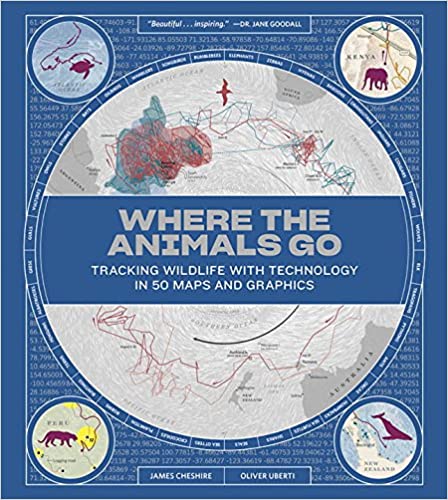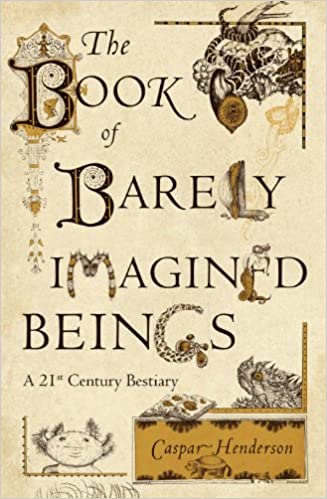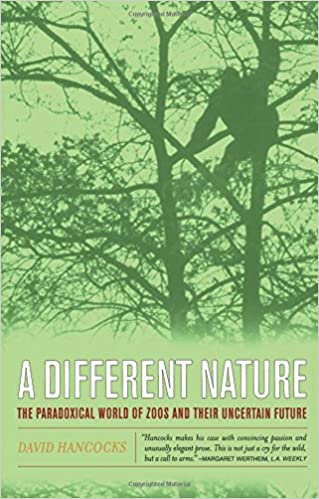Lydia Millet's 6 favorite books about appreciating living creatures
The author recommends works about magnificent elephants, rethinking zoos, and the magic of trees

When you make a purchase through links on our site, we may earn a commission
Lydia Millet's new novel, A Children's Bible, is a modern Noah's Ark fable in which adolescents take the lead when climate disaster strikes. Below, the award-winning author recommends nonfiction that deepens appreciation for other living creatures.
Where the Animals Go by James Cheshire and Oliver Uberti (2016).
The Week
Escape your echo chamber. Get the facts behind the news, plus analysis from multiple perspectives.

Sign up for The Week's Free Newsletters
From our morning news briefing to a weekly Good News Newsletter, get the best of The Week delivered directly to your inbox.
From our morning news briefing to a weekly Good News Newsletter, get the best of The Week delivered directly to your inbox.

This book of beautiful maps, created using modern technologies, traces the various movements of wild animals, from loggerhead sea turtles to emperor penguins. I share it, along with these other revelatory works, because the COVID-19 pandemic began in the trafficking of wildlife for food and body parts. Blame for the leap of the disease to people can't be laid at the feet of bats, pangolins, or civets, of course; it was the direct result of our own bad behavior, and of blindness to how the exploitation and abuse of wildlife is linked to our own well-being.
The Book of Barely Imagined Beings by Caspar Henderson (2013).

Medieval bestiaries were compendiums of animals, both mythic and real: Henderson's modern version combines illustration and text to provide a deeply illuminating survey of real but astonishing creatures, starting at the axolotl and ending with the zebra fish.
A Different Nature by David Hancocks (2001).
A free daily email with the biggest news stories of the day – and the best features from TheWeek.com

Hancocks, a brilliant zoo director and architect, examines the history of zoos and calls urgently for us to reinvent them as places constructed for the good of animals rather than the convenience of people.
Giants of the Monsoon Forest by Jacob Shell (2019).

Shell's book explores the lives of the extraordinary Asian elephants who spend their nights in the forests of Myanmar and India and by day work with their mahouts, harvesting timber. These animals make up about a fifth of all Asian elephants left in the wild.
When Elephants Weep by Jeffrey Moussaieff Masson and Susan McCarthy (1995).

The authors, a former psychoanalyst and a science writer, offer an accessible, compelling look at the interiority and individuality of nonhuman creatures, showing them to be capable of anger, grief, altruism, and gratitude.
The Hidden Life of Trees by Peter Wohlleben (2015).

This international best-seller was written by a German forester who became disillusioned with his profession and turned to activism. It is a good introduction to the proposition, not new to philosophers but increasingly receiving scientific attention, that trees and other plants possess both sentience and intelligence.
This article was first published in the latest issue of The Week magazine. If you want to read more like it, you can try six risk-free issues of the magazine here.
-
 Venezuela’s Trump-shaped power vacuum
Venezuela’s Trump-shaped power vacuumIN THE SPOTLIGHT The American abduction of Venezuelan President Nicolás Maduro has thrust South America’s biggest oil-producing state into uncharted geopolitical waters
-
 Most data centers are being built in the wrong climate
Most data centers are being built in the wrong climateThe explainer Data centers require substantial water and energy. But certain locations are more strained than others, mainly due to rising temperatures.
-
 ‘Maps are the ideal metaphor for our models of what the world might be’
‘Maps are the ideal metaphor for our models of what the world might be’Instant Opinion Opinion, comment and editorials of the day